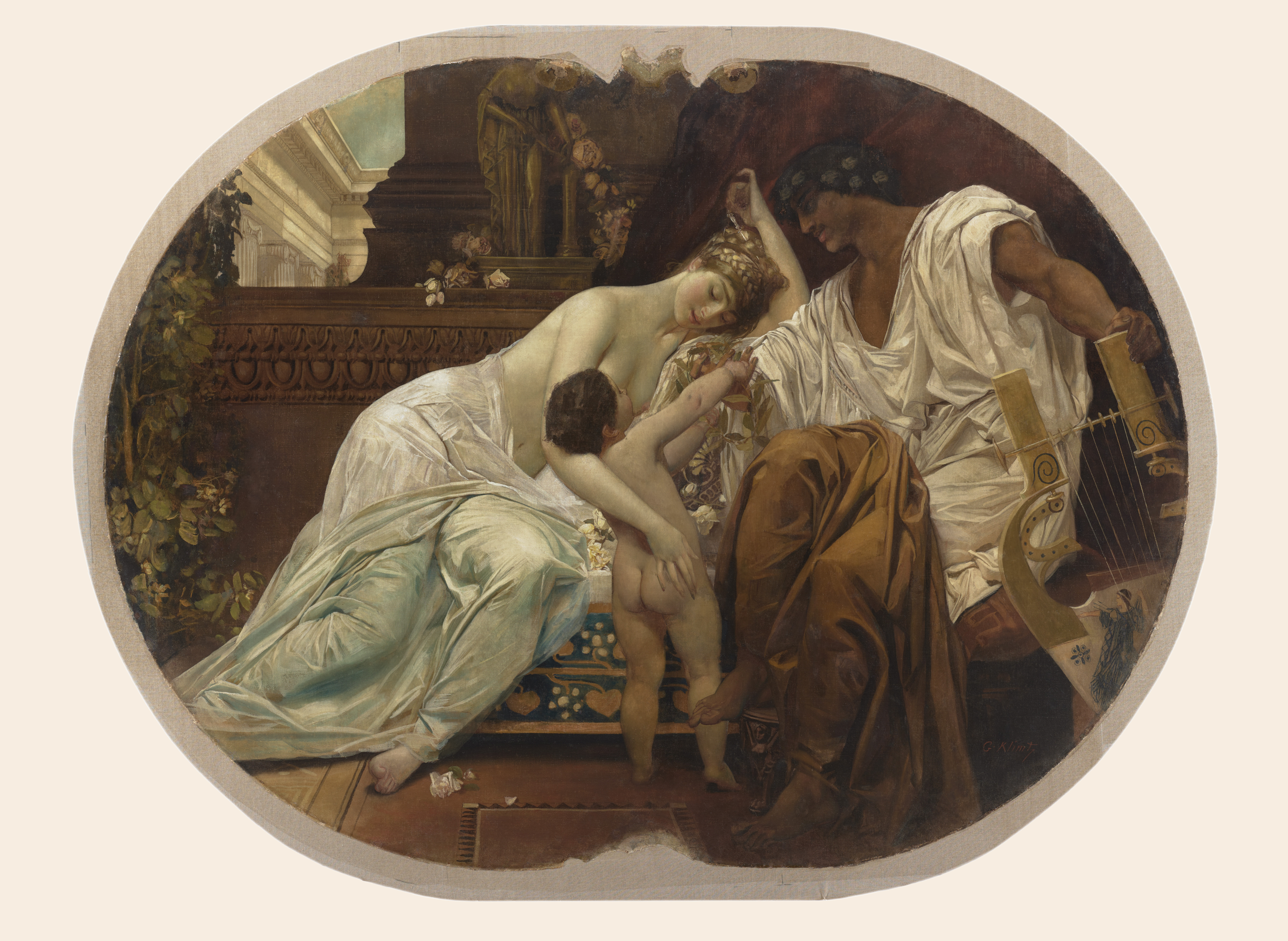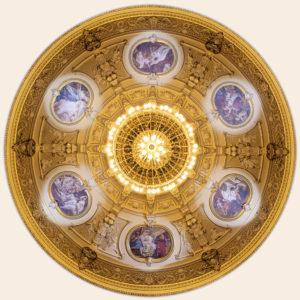
Orpheus and Eurydice
Gustav Klimt, Vienna, 1885, glue tempera
The Croatian National Theatre Ivan pl. Zajc, Rijeka (vault)
In the painting depicting the god of poetry and his chosen one,
Eurydice, the brightness of her skin, sensuality of her body and gentleness of her gaze directed towards the god of love Amor attract the most attention. Amor is depicted as a boy, with his back turned from the observer as he hands a laurel wreath to Orpheus next to whom there is his recognizable attribute – a large lyre. Parts of the ancient temple can be seen in the background, and the whole scene is rounded off with roses as a motif that all three artists incorporated into their paintings evoking the old theatrical tradition of presenting performers with flowers. The almost unbridled materiality of the draperies, richness of their folds and a wide range of white and grey tones come to the fore. The fabric falls in lavish cascades and the abundance of drapery fills most of the painting referring to the psychological expression of the narrative itself elevated to the level of a symbol of sublime love.
